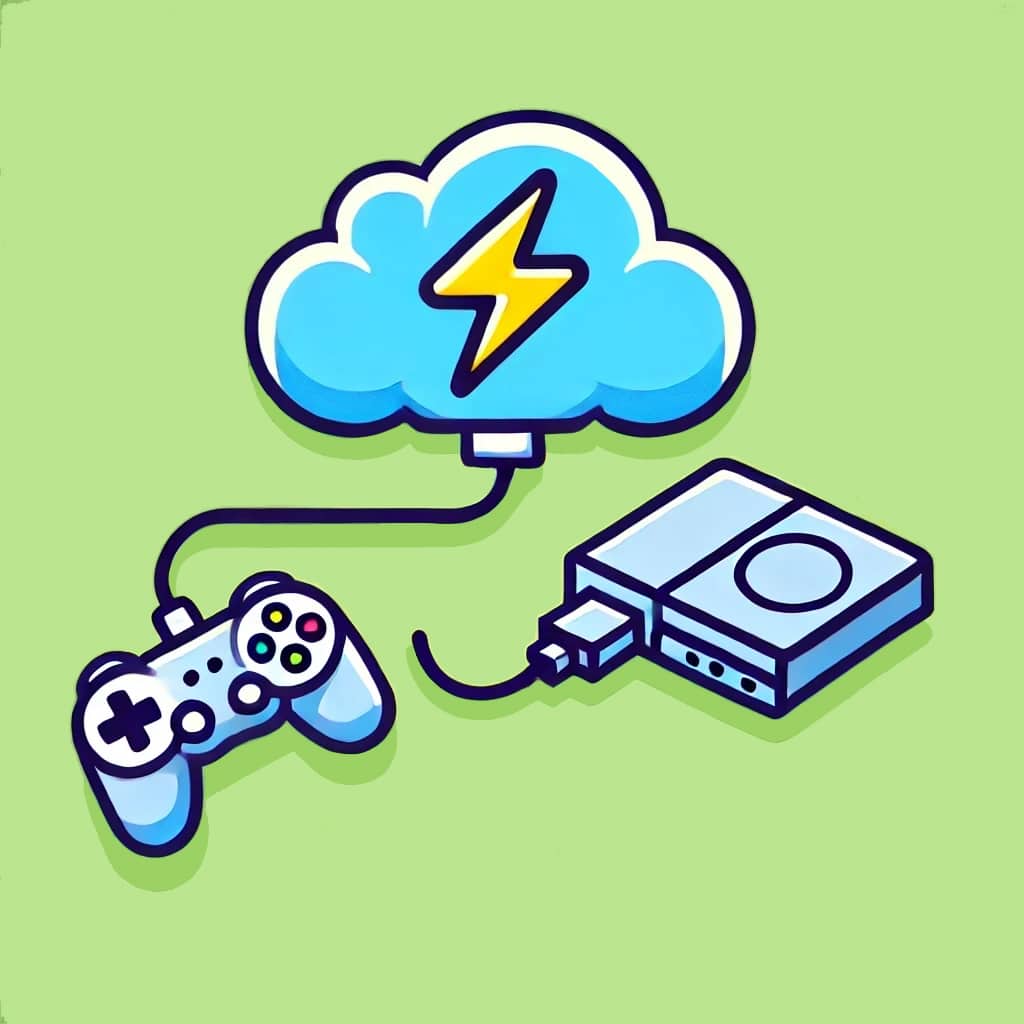Imagine a world where gaming is limitless, free from the constraints of hardware and location. This is not a distant future but a reality empowered by cloud gaming. With its potential to transform the gaming landscape, cloud gaming is capturing the attention of developers, gamers, and tech enthusiasts alike. This blog post explores the burgeoning realm of cloud gaming, highlighting its significance, potential challenges, and what it means for the future of gaming.
The Rise of Cloud Gaming
Cloud gaming, often touted as the next big thing in gaming, leverages the power of remote servers to run games, which are then streamed directly to your device. Unlike traditional gaming, which relies heavily on local hardware, cloud gaming allows players to access games without worrying about their device’s specifications. This new approach democratizes gaming, making high-quality experiences accessible to a broader audience.
Although the concept of cloud gaming has existed for some time, significant advancements due to improved internet connectivity and server technology have only recently been seen. Companies like Google and NVIDIA are investing heavily in this sector, underscoring its growing importance. By shifting the heavy processing to the cloud, games can be played on various devices, from smartphones to smart TVs, with minimal lag.
For gamers, this means the freedom to play anywhere, anytime, without upgrading hardware. For developers, it opens up new opportunities to reach audiences previously inaccessible due to hardware limitations. However, while promising, cloud gaming also presents its own challenges that must be addressed.
How Cloud Gaming Works
At the core of cloud gaming is streaming, similar to how Netflix streams movies. Instead of downloading a game and running it on your device, cloud gaming streams the game from a server. Your devicsends input commands to the server, which processes them and returns the resulting video frames.
The heart of this process is robust data centers equipped with powerful servers that handle the computational demands of modern games. These data centers ensure that gamers receive high-quality graphics and smooth performance, regardless of their device’s capabilities. The key challenge here is latency, as any delay in communication between the server and the device can disrupt the gaming experience.
To counteract latency, cloud gaming services strive to have data centers located close to end users, reducing the time it takes for data to travel. Additionally, compression technology advancements help deliver high-quality video streams with minimal data usage, making cloud gaming feasible even for those with slower internet connections.
Benefits of Cloud Gaming
Cloud gaming offers numerous benefits beyond just playing games without high-end hardware. One significant advantage is the convenience it brings. Gamers no longer need to worry about storage space for large game files or frequent updates. Everything is handled on the cloud, ensuring that players always have access to the latest version of the game.
Another compelling benefit is cost efficiency. With cloud gaming, players can avoid the hefty costs of purchasing gaming consoles or upgrading PCs. Subscription models provide access to a vast library of games, offering better value for money. This model also encourages experimentation, as players can try out games without committing to a purchase.
For developers, cloud gaming reduces the complexity of creating games for multiple platforms. By developing for the cloud, they can ensure their games are accessible on any device, widening their potential audience. Additionally, it provides opportunities for innovative gameplay experiences, leveraging the cloud’s immense processing power for features like real-time world transformations and advanced AI.
Challenges Facing Cloud Gaming
Despite its advantages, cloud gaming faces several hurdles that need addressing. The most pressing issue is internet dependency. Cloud gaming requires a stable, high-speed internet connection, which may not be available in all regions. This limits the accessibility of cloud gaming services to areas with robust internet infrastructure.
Although improved, latency remains a concern. Real-time processing is crucial for gaming; any lag can diminish the experience. Cloud gaming platforms continuously work on reducing latency, but factors like network congestion and server distance can still affect performance. Ensuring a seamless experience across different geographical locations is a significant challenge.
Additionally, there are concerns regarding data privacy and security. With personal data and game progress stored in the cloud, protecting this information from breaches is paramount. Cloud gaming services must implement stringent security measures to safeguard user data and maintain trust.
Major Players in Cloud Gaming
Several major companies are responsible for cloud gaming, each with unique strengths. Google Stadia, for instance, offers a controller that connects directly to Wi-Fi, reducing input lag and enhancing the gaming experience. Google leverages its vast network of data centers to deliver high-quality streaming worldwide.
NVIDIA’s GeForce NOW focuses on performance, allowing users to stream games they own on other platforms. Its emphasis on high-quality graphics and low latency has made it a favorite among PC gamers. Each player in the cloud gaming space brings something unique, contributing to the sector’s rapid evolution.
Cloud Gaming and the Future of Game Development
The rise of cloud gaming is reshaping how games are developed. With the cloud’s virtually limitless resources, developers can push the boundaries of what’s possible in gaming. This shift encourages innovation, allowing for more complex simulations, larger game worlds, and more intelligent AI without worrying about hardware limitations.
Cloud gaming also facilitates continuous game updates and improvements. Developers can make real-time changes and introduce new content without requiring players to download patches. This flexibility enhances the player experience and creates more dynamic and engaging games.
Furthermore, the cloud provides developers with valuable data insights. By analyzing player behavior and performance, developers can better understand what works and what doesn’t, leading to more refined and tailored gaming experiences. This data-driven approach opens new avenues for creativity and personalization in game design.
The Impact of Cloud Gaming on Gamers
Cloud gaming represents a shift in how gamers interact with their favorite pastime. The accessibility of games across various devices means players can enjoy gaming on the go, whether on a smartphone during a commute or on a smart TV at home. This flexibility can expand the gaming audience, reaching casual gamers needing more dedicated gaming hardware.
The subscription model also changes how gamers discover and play new titles. With access to a vast library of games, players can experiment with genres they might not typically explore, fostering a more diverse gaming culture. This model reduces the risk of buyer’s remorse, as players can try before committing to a purchase.
Additionally, cloud gaming can enhance social interactions. With features like instant play and cross-platform support, gamers can easily connect and play with friends, regardless of their device. This connectivity enriches the social aspect of gaming, making it more inclusive and community-driven.
Cloud Gaming and the Environment
The discourse surrounding cloud gaming often overlooks its environmental impact. The traditional gaming model involves producing physical discs, packaging, and shipping, all contributing to a sizable carbon footprint. Cloud gaming reduces this impact by eliminating the need for physical media.
However, operating massive data centers also consumes substantial energy. Companies in the cloud gaming space are increasingly aware of this issue and are investing in renewable energy sources to power their operations. By transitioning to green energy, cloud gaming can offer an environmentally friendly alternative to traditional gaming practices.
This shift is not only beneficial for the planet but also aligns with the values of environmentally-conscious consumers. Players can enjoy their favorite pastime by choosing cloud gaming while contributing to a more sustainable future.
The Evolution of Cloud Gaming Technology
The technology behind cloud gaming is evolving rapidly, with continuous improvements in streaming quality and latency reduction. Advances in codecs and compression techniques enable high-definition gameplay with minimal data usage, making cloud gaming more accessible to users with varying internet speeds.
Emerging technologies like edge computing are set to enhance cloud gaming further. By processing data closer to the player, edge computing reduces latency and improves responsiveness. This technology promises to bridge the gap between local and cloud gaming, offering the best of both worlds.
Cloud gaming services will likely integrate with emerging technologies like virtual and augmented reality. This integration will open up new possibilities for immersive gaming experiences, blurring the line between reality and the virtual world.
How to Get Started with Cloud Gaming
For those eager to explore cloud gaming, getting started is straightforward. Begin by researching the available cloud gaming services and their unique offerings. Consider factors like game library, subscription models, and device compatibility in your decision-making process.
Once you’ve chosen a service, sign up and configure your device for optimal performance. Ensure a stable internet connection and check your device’s compatibility with the service. Most platforms offer free trials or entry-level subscriptions, allowing you to test the waters before committing.
Finally, explore the community and resources provided by the cloud gaming service. Many platforms offer tutorials, forums, and customer support to help you make the most of your gaming experience. Engage with fellow gamers and share your experiences as you immerse yourself in cloud gaming.
Final Thoughts on Cloud Gaming
Cloud gaming is more than just a trend; it’s a paradigm shift in how we experience and engage with games. For developers, it presents an opportunity to innovate and redefine the boundaries of gaming. For gamers, it offers unprecedented access, flexibility, and community engagement.
As cloud gaming continues to evolve, its impact on the gaming industry will be profound and far-reaching. By addressing challenges and leveraging technological advancements, cloud gaming has the potential to become the dominant force in gaming, shaping the future of entertainment and digital interaction.
Whether you’re a developer, gamer, or tech enthusiast, cloud gaming offers exciting possibilities and challenges worth exploring. Stay informed, stay engaged, and prepare to be part of the next great revolution in gaming.


